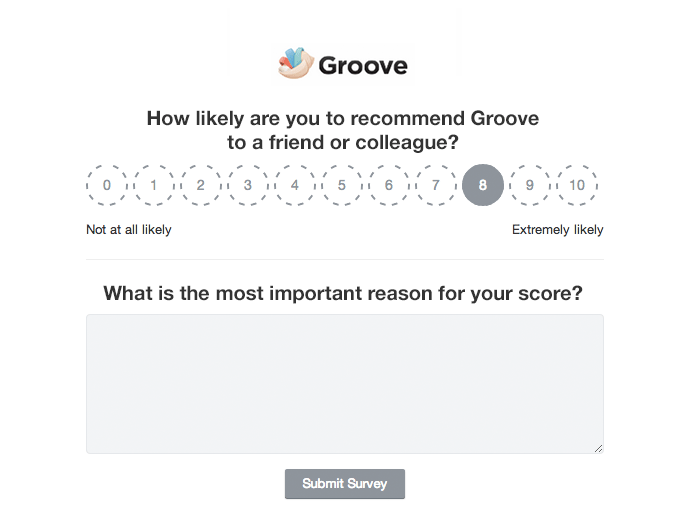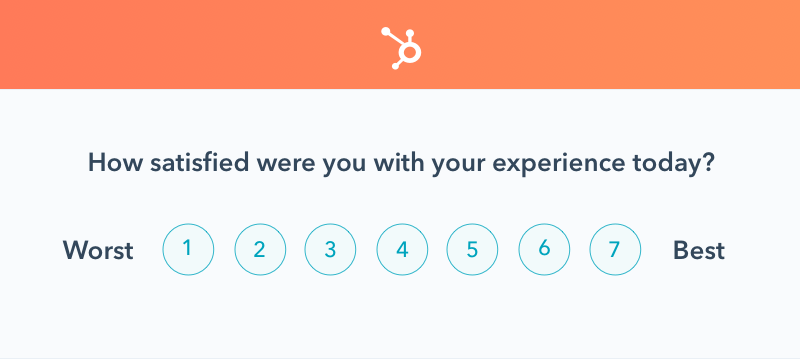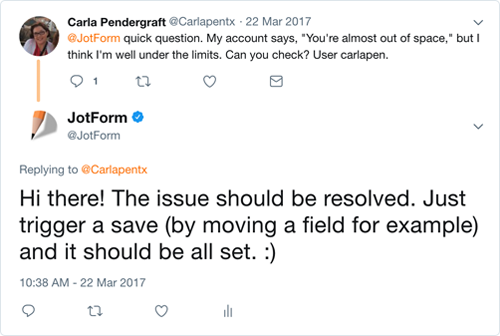4,856 words ~ 15 min read
Marketing & growth fundamentals

Don’t just disrupt how consumers think: Walk your talk
Greatness is for all of us
Nike
Back in 2012, the company Nike, an iconic world leader in athletic footwear and apparel, launched a campaign called “Find Your Greatness.” A powerful message meant to “inspire anyone who wants to achieve their own moment of greatness in sport.”
In a series of carefully crafted TV ads, you see footage of ordinary people and everyday athletes jogging, bicycling, skating with their peers, or running a marathon in a wheelchair.
“Greatness is not in one special place,” a narrator says, “and it is not in one special person.” The underlying idea is that we are all capable of the extraordinary; no one has to be part of the elite to push beyond their limits. “Greatness is wherever somebody is trying to find it,” the narrator concludes.
Suddenly, you’re not thinking about buying yet another pair of running shoes, you’re thinking that if you buy from Nike, you’ll become great, too.
Your entire model of thinking has been unknowingly disrupted.
That’s the power of innovative marketing.
What the most successful brands have in common
Nike has long been leading the way in creating meaningful stories to build a connection with their consumers.
And their bold marketing has paid off. According to Forbes, the activewear giant was given a brand valuation of $32.4 billion in 2019.
The company’s huge success isn’t a surprise. Their campaigns evoke emotion, and more importantly, they strike a chord that changes how a person thinks about the retail experience.
That’s what the most successful brands have in common; they disrupt the status quo. As Mark Bonchek illustrates for Harvard Business Review, “Innovators change the lens through which we see the world.” He writes:
Companies that successfully market and sell innovation are able to shift how people think not only about their product, but about themselves, the market, and the world.
Challenging the way consumers think
Disruption is all about risk-taking, trusting your intuition, and rejecting the way things are supposed to be.
Richard Branson, Virgin Group founder
In a 1992 interview, Nike CEO Phil Knight spoke about what distinguishes them from their competitors “We’ve always believed that to succeed with the consumer, you have to wake him up. He’s not going to walk in and buy the same stuff he always has or listen to the same thing he’s always heard.”
Indeed. A company that doesn’t evolve will eventually kill its product. Why?
Because they’ve stopped nurturing a culture of innovation.
Since the early days of building my Jotform, I knew I wanted to do more than just sell easy-to-use online forms. I wanted to spread the spirit of creativity throughout my team, and create meaningful relationships with our customers.
Establishing an innovative company involves challenging old mental models, and giving consumers a new lens through which to view your business. Below are a few strategies I’ve implemented over the years to create this mind shift:
1. Drop the jargon and focus on your core message
Here’s an incredibly common phenomena in the tech world you’ll see: an eager entrepreneur trying to explain their product to a potential customer by using jargon-filled language. You’ll then see the person scratch their head trying to figure out why they should care?
As a self-proclaimed nerd, I get this tendency. I’ve been known to get overly excited about technological advances of a new feature. But I also make it a point to always remember my core message: We make people’s lives easier.
We make your life easier.
Shifting someone’s mindset about what you offer comes down to identifying what makes your product unique, and then asking yourself what don’t people get about it? What problem are you solving to help them? What gets someone excited about what you’re doing? The answers are what you ultimately want to convey.
2. Don’t just disrupt: walk your talk
A big part of what’s made Nike the powerhouse they are today, is that they don’t stop innovating. They don’t come up with one singular campaign to connect with consumers. They constantly reinvent the wheel.
But they don’t stop there.
Aside from using powerful stories to cultivate meaningful relationships, they also listen closely to ever-changing cultural and social contexts to have a greater understanding of their customers’ needs and their role in effecting real change.
According to Fast Company, “During the 2016 Olympics, Nike put female athletes in the spotlight in its popular "Unlimited" ad campaign — and it promoted diversity in its own business.”
The bottom line: they walk their talk. “In 2016, the majority of the company’s employees were minorities, and women made up 48 percent of its global workforce.”
Disrupting means very little if you aren’t modeling the values you promote.
3. Breakthroughs involve relentless experimenting
Invention comes from looking to create more value. The better we get at explaining our why to customers, the more we push our company to do its best thinking — all of this comes from a place of authentic interest.
“Shifts in thinking don’t happen overnight,” explains Bonchek, “any more than going to a weekend yoga workshop makes you flexible.” At Jotform, we constantly question our motivation and how we can better connect our technology to our customers. We never stop experimenting.
In her revelatory book Imagine It Forward, author and former vice-chair of General Electric, Beth Comstock writes the following “People who effect radical change have to exhibit an uncompromising faith in experimentation, a bias for novelty and action, and a sense that disruption is something you cause, not observe.”
How do we disrupt how consumers think?
By remembering these wise words by Comstock:
Change is a messy, collaborative, inspiring, difficult, and ongoing process — like everything meaningful that leads to human progress.
Your brand is not what you think it is: How to measure customer happiness & other confusing metrics

On November 27th, 2017, I missed my flight to Bali.
The island’s highest volcano, Mount Agung, appeared to be on the brink of an eruption.
It wasn’t the lava or ashes in the sky that caused the trouble, though.
First, my airline charged me the full fare to get on the next available flight. When I arrived at my final destination, it turned out they’d lost my luggage, too. An hour later, I left the arrivals area to be greeted by a smiling man who’d come, uninvited, from my hotel to collect me — despite it being past 2am.
When I finally reached my hotel room, I found a pair of box-fresh pajamas next to a handwritten note, welcoming me and apologizing for my inconveniences.
I wake up 10 hours later. The buffet is closed, but they usher me to a table anyway, placing a steaming coffee in front of me with another smile.
After breakfast, I prepare myself for the inevitable barrage of calls to try and reclaim my luggage.
As I click the keycard into my room, something looks different.
My lost suitcase is waiting next to my bed.
Now, I won’t name names: let’s just say that I’ll be bad-mouthing this particular airline for the foreseeable future.
The hotel, on the other hand? It’s the way they intuitively understood my needs that will have me waxing lyrical to my friends and writing glowing reviews.
Clearly, these two companies define themselves very differently.
What defines our brand?
Here’s a clue: it’s not our brilliant marketing, our slick website, or even our awesome product. We can’t A/B test it.
Marty Neumeier, the bestselling author of The Brand Gap, puts it perfectly:
It isn’t what you say it is — it’s what they say it is.
Our brand IS the sum of every single experience a person has with our company — online and offline.
Almost everything is replicable these days. We’re all in danger of having our ideas copied overnight, from our first line of code to the last line of our mission statement.
But nobody can steal our customer experience. This vague, intangible element is the one factor that keeps us unique. Delivering an outstanding customer experience starts with treating our customers as if they were our best friends.
This is more than a marketing tool. It’s a long-term, all-encompassing mindset; and it involves every single person on our team.
Satisfaction or happiness?
Aiming to keep our customers satisfied is nothing new.
But should customer satisfaction be our barometer for success?
With so many semi-identical companies jostling for attention online these days, customer satisfaction per se won’t make us stand out.
Satisfaction doesn’t guarantee loyalty. Satisfied customers leave companies every day.
And while acquisition results may keep us afloat, customer retention is the real driver of long-term growth.
Bill Macaitis, former Chief Marketing Officer of Slack, was not satisfied if someone signed up. Or when someone became a paying customer. He was only fully satisfied when someone was so happy with the service that they would recommend Slack to someone else.
Thus, we should go beyond delivering just satisfaction and instead, aim for happiness. Because happiness = loyalty.
How to measure happiness & other metrics

We can speculate on whether or not our customers are happy.
Or, we can ask them ourselves.
Naturally, this is where metrics and KPIs come in. These numbers are useful not as a miracle solution, but because they help us learn.
However, there’s endless data we could be tracking — and much of it will lead to more questions than answers. And an over-reliance on data can cloud our judgement and even destroy our relationship with the customer.
When it comes to metrics, less is more.
Instead of drowning in graphs and spreadsheets, we can select a few baseline tactics and set them on a company-wide basis.
But there isn’t a tried-and-tested set of calculations that works for everyone, nor a set of figures we should aim for. What counts as major success for a small startup could signal bankruptcy for a global conglomerate.
The value of this data depends purely on the context in which it exists.
So, before setting any metrics, we should ask ourselves:
- How does this contribute to our company’s long-term vision?
- What are we trying to achieve/change on the basis of this data?
- What objective are we measuring this against?
It’s also important to consider the balance between short and long-term metrics. Certain results might capture a snapshot of customer happiness, but these do not necessarily translate towards success in the long run.
Short-term metrics have their place, but they will be effective only when integrated with long-term tactics in the wider framework of the customer journey.
Oh, and measuring is completely meaningless — unless it’s used to drive action (and not distraction).
Below are some metrics worth keeping an eye on.
1. NPS® (Net Promoter Score®)
“The one number you need to grow”, NPS is a widely-regarded to be the most valuable indicator of long-term happiness — and the simplest to use.
It is a customer loyalty metric that asks:
- How likely is it that you would recommend our company/product/service to a friend or colleague?
- What is the reason for your score?
The first question — with a scoring scale from 1 to 10 — forms the basis of NPS:

- Those who indicate a 9 or 10 are “promoters”.
- Those who indicate a 7 or 8 are “passives”.
- The rest are “detractors”.
Our NPS is calculated by subtracting our percentage of detractors from our percentage of promoters.
Ideally, we should see our NPS score curve up over time.
The second question (“What is the reason for your score?”) digs deeper into why customers scored the way they did. Qualitative analysis of answers to both these questions should help us to uncover:
- What promoters love about our company
- What is preventing our passives from becoming promoters
- What is making our detractors unhappy, and how to fix it
NPS is about overall, long-term happiness, which means it’s important to send out surveys fairly regularly.
Best practise recommends three points in the customer journey: 1 month, 6 months and 1 year.
How to set up Net Promoter Score:
You can build an NPS form from scratch using Jotform’s free form builder, or start with a ready-to-use NPS template.
Once you’ve started receiving answers, you can begin to calculate your Net Promoter Score.
2. CSAT (Customer Satisfaction)
While NPS focuses on long-term happiness, CSAT is a key metric in calculating short-term success.
CSAT tends to measure customer happiness at specific touchpoints (e.g., after a conversation, or the introduction of a new service, or the resolution of a problem).
It can help us identify which parts of the customer journey contribute towards a better experience.
CSAT asks questions like “How would you rate your recent experience with X?”

Customers then rate their experience on a scale.
The scale can be 1–3, 1–5, or 1–10; there isn’t a universal best practice as to which survey scale to use.
The answer can be simplified further by asking “Were you satisfied with your experience?”, with customers responding either YES/NO.
If customers have selected ‘NO’ or a low-ranking number, we can provide the option for them to explain their response.
How to set up Customer Satisfaction Score:
Setting up the right CSAT depends on what you exactly want to measure.
You can get started with a simple survey template, or focus on measuring multiple touchpoints using a more complex template.
You can also make a combination of asking open-ended and scale questions here or build your CSAT from scratch using the free form builder.
3. CES (Customer Effort Score)
CES is another popular short-term metric that enables us to measure customer happiness with one question.
According to research by CEB, the creators of the Customer Effort Score:
Service organizations create loyal customers primarily by reducing customer effort — i.e. helping them solve their problems quickly and easily — not by delighting them in service interactions.
CES measures the amount of effort that a customer has to put in during an interaction with our brand — whether it’s a purchase, a conversation or the pursuit of information.
Setting up a CES survey follows a similar framework to CSAT, with the primary statement being: “The company made it easy for me to resolve my issue”.
Users can then rate their effort on a scale of “strongly disagree” to “strongly agree”.
Here is a quick template you can use to set up and measure Customer Effort Score.
4. Response time
Response time can be a dilemma.
From a customer’s point of view, the faster the better. They would rather a quick reply — even if it doesn’t solve their query — than an informative yet delayed one.
But with the scarce resources of a startup, response time is often the first place we make trade-offs.
Here is something to focus on: the 90th percentile value. This is the maximum time 90% of our customers have to wait before they get a response.
To calculate this, we can:
- Sort the our responses in order of time.
- Remove the top 10% instances.
- The highest value left is the 90th percentile.
Once we know the percentile, we should aim to reduce it.
Of course, there will always be users in the 100th percentile who experience delays, but aiming to reduce it for 90% of users is a great start.
We can categorize these calculations by medium — email, social media, phone, live chat etc — or simply make this an overarching metric.

It’s also worth keeping in mind that customers will have varying expectations depending on their channel for contacting us.
According to Jay Baer, “42% of consumers complaining on social media expect a 60 minute response time.” But when it comes to email, 50% of users expect a reply within a day.
The power that a lightspeed response time can have on long-term happiness shouldn’t be underestimated.
For instance, HotelTonight maintains a 24/7 response time of fewer than 10 minutes; this has helped the company retain a loyal customer base and has been a key driver of the company’s explosive growth.
5. Total Conversations
Another simple yet effective metric is a count of every interaction our team has conducted with our customers over a period of time.
Tracking this long-term can provide powerful insight on which times of the day are most busy, which issues continue to crop up, and so on.
We can then break this down even further into conversations-per-teammate, and conversations per-teammate-per-day.
With greater knowledge of our support trends, we can understand where team members may be being overworked and need backup, and stagger shifts or workloads if necessary.
6. Targeted feedback
Targeted feedback is one of the most valuable long-term inputs we can receive; especially if it’s a large amount collected over a long period of time. A few things to keep in mind:
- It should be simple and straightforward for customers to give us feedback, given that most of them will be short on time and easily distracted.
- We must only ask for feedback when we are prepared to act on it. Without action, the signal we send out is that we don’t care what our customer has to say.
- Perhaps we think some of our customers are just plain wrong. But we shouldn’t dismiss their opinions. Their ‘insane criticisms’ might simply be a finger pointing at our blind spots.
- It’s important to tailor feedback groups in-line with what we want to improve. Sending surveys to mass groups will only frustrate users and dilute our insights.
Adding a feedback button to your site makes collecting targeted customer feedback quick and easy (here are a few reasons why you should consider adding that button soon).
Just remember to think: am I asking the right customers the right question, at the right time, in the right way?
The bottom line
Knockout results on a spreadsheet are great — but they aren’t everything.
Remember that intention doesn’t equal action; just because someone says they would recommend us, it doesn’t mean they actually will.
And no matter how cleverly we craft our offering, there’s no guarantee that users will react to it the way we expect or hope.
What we can ensure, however, is that all users will experience the ‘friend-of-mine’ approach, no matter where or how they interact with our brand; they could be on a customer support call, watching an online ad or reading our legal terms of service.
Because ultimately, customer acquisition and customer retention all boil down to the same thing: customer experience. It’s a chicken-and-egg way of thinking.
That’s why every single person at our company influences the experience our brand delivers — and why every single person at our company is responsible for growth.
Therefore, metrics should be set to ensure the ‘friend-of-mine’ approach runs across the board, and to encourage each team member to take personal ownership of the user experience.
Being completely customer-centric is no easy feat. But it’s the first step in creating an environment where our users wield growing power.
So before we start tallying up numbers, we must remember the value of 2am car journeys, handwritten notes and lost-and-found luggage — whatever our version of this may be.
Happiness and experience can’t be measured; but if we make them our priority, we will reap the benefits tenfold.
Why customer service is the new marketing

And how to build a superstar customer support team — no matter the size of your business
Out of every 10,000 companies that claim they offer ‘a superior customer experience’, only 100 or so are actually delivering it.
That’s one out of 100. Ouch.
And it’s estimated that in the US alone, over $62 billion in revenue is lost every single year because of this.
Surprised? I was.
After all, it’s been 130 years since retail legend Marshall field coined the phrase:
Give the lady what she wants!,
and we’ve had this mentality drummed into us ever since. Even if we do nothing else right, we need to nail customer service.
This matters now more than ever.
Because today’s hyper-empowered customer knows what an exceptional customer experience feels like. She’s seen it first-hand with the top dogs — Apple, Amazon, Netflix , UPS — and now, she expects it from everyone.
I don’t compare my banking experience only to other bank experiences” says Aimee Lucas, Vice President at Temkin Group. “I compare my bank experience to my best experiences with [those of] my favorite airline, with my favorite restaurant and with my favorite retailer.
If they can do it, why can’t you?
We invest way more trying to win over new customers than we do in keeping our existing ones happy — despite all the evidence to show it should be the other way round.

(Keeping in mind that annual $62 billion loss, the industry isn’t quite breaking even).
But really, customer service is marketing the “relationship marketing”.
And that’s why every interaction should be treated like a deal-clinching pitch.
Obviously, this is tall order.
But customer service can be a company’s most powerful marketing weapon — if they know how to sharpen it.
Customer service as a competitive advantage
Consider the case of Virgin Atlantic.
Sir Richard Branson was tired of big airlines charging exorbitant fees in exchange for crappy service, so he created Virgin Atlantic, which went on to disrupt the airline industry forever.
“Our marketing team has defined our brand purpose with this pithy one-liner”, Branson explains.
Don’t just play the game, change it for good.

His secret weapon?
It wasn’t the latest cutting-edge technology, genius marketing campaign or even a dramatically different product. Nothing groundbreaking to see here.
He simply went old-school and out-serviced his competitors by (air) miles.
It worked, and 34 years later, it’s still working.
Virgin may have billions of dollars in the bank (which certainly helps), but you need their mindset — not their money — to treat customers better than your competitors.
This mindset can be summed up as: “What is the average in my industry, and how can I consistently do better?”.
You don’t need to go to extraordinary measures to provide extraordinary customer support; you just need to consistently exceed expectations.
And for that, you need a superstar customer service team.
Here’s the good news
Millions of dollars and a huge team aren’t required when it comes to out-servicing your competitors.
Take my company Jotform as an example.
As the founder of a startup with over 10 million users, you might think I was always focused on strategic growth. Maybe you imagine spreadsheets and acquisition charts and high-level financial meetings.
The reality?
We started out with a customer support team of… me.
I was doing customer support — all day long.

From the moment I sat down at my computer until the end of the workday, I answered hundreds of emails and customer questions.
And it was just me. I was a support department of one.
Without any fancy help desk software or CRM tools, I diagnosed myself the problem, looked into the root of it, chatted to the customer one-on-one.
It was hard work, and I certainly didn’t always get it right — but I was consistent. I cared so much, and customers could tell.
Of course, it’s easy to show you care in the early days. It’s when your business starts to scale that your vision for service is in danger of becoming diluted.
Luckily, Jotform grew slowly, and in turn, so did our customer support team.
We went from a team of one, to three, to nine; today, we’ve got thirty altogether. And all of those team sizes worked equally well, both when we were profitable and when we weren’t.
Because we only hired when the need became pressing; because we only hired in response to, and proportionate to, our growth; because we only hired thoughtfully.
Different stages represent different challenges. But you can build an exceptional customer support experience, no matter the size of your company — or the tightness of your purse strings.
Here are some of the things I’ve learned:
Hire methodically
Looking for a developer? Look at their degree and programming experience. Need a designer? Scour their digital portfolio.
Hiring a member of support staff is a little different, and in many ways, far more complex. Yes, previous experience is important, but it boils down to a certain personality type that’s elusive and hard to summarize.
That’s why so many managers have a free-form interview and rely on their gut instinct. But according to Eileen Naughton, Google’s VP of People Operations, this is the worst way to hire.
She argues that this makes us susceptible to our own biases, meaning we choose people who are similar to us rather than the person who is best for the job (clearly we’re all a bunch of narcissists).

The alternative?
It’s not rocket science, but I suggest a Rubik’s cube approach: a ‘dream profile’ that can be slotted together. Chat to your existing members of support and develop a formula to follow, such as:
- 1. Identify the key traits you’re looking for (e.g. empathetic, kind, curious, intuitive, conscientious, strong communicator, problem-solver, …)
- 2. Then add the ‘must-haves’ in relation to your business — for instance exceptional written abilities, or the ability to work certain hours, or advanced knowledge of a program…
- Finally add the cherry-on-top ‘nice-to-haves’ that can act as bonus points.
Taking a methodical approach will stop you from acting on a whim. Initially there may be some trial and error involved, particularly if you’re hiring from scratch. But over time, you’ll be able to generate a reliable profile to follow and a set of tactics to match.
Because being ‘great with people’ doesn’t necessarily translate down the line — you need someone who’s a perfect match for your customers, who’s aligned with the culture of your business.
Remember: technical skills can be taught, but a mindset is almost impossible to change.
$$$
Customer service is often seen as a bottomless drain on a company’s finances.
If only those pesky customers would just stop having issues, our profits would be skyrocketing…
Perhaps. That’s why many startups respond to growth pressure by reducing the amount they spend on support.
But, despite seeming counter-intuitive, providing exceptional customer service and being cost-effective aren’t mutually exclusive; many large and small businesses manage to be both.
Professor Jochen Wirtz of Forbes describes this winning technique as:
a dual culture strategy, taking an ambidextrous approach to business challenges and embracing — rather than avoiding — what others might see as contradictions.
Put simply: investing only in areas that add value for the customer, while cutting costs in areas which don’t.
It’s a tricky balance to strike, but it’s strike-able.
Customer service kings Amazon agree, avoiding any spending on things their customers don’t care about:
Frugality breeds resourcefulness, self-sufficiency, and invention.
Splashing out on the latest tools to calculate vanity metrics? Customers don’t care.
Paying sky-high rent for a fancy office in a major city? Customers don’t care.
Investing in hiring and retaining the best people? Customers definitely care.
But do those fantastic people all need to be under the same roof? No.
If you think creatively, there are plenty of tactics to keep costs low while maintaining excellent service. Outsourcing awesome staff is a good place to start.
Leave them to it
We can all agree that customer support is inherently stressful.
99% of the time, customers get in touch to vent, complain, express their confusion; there is rarely a sense of let up. It can feel never-ending, like a relentless tide of negativity.
And yet, customer support agents (hopefully) love what they do and enjoy figuring out solutions to problems. It’s what they’re good at, the area they thrive in. It’s why we hired them.
That’s why breathing down their necks or trying to implement a strict process is guaranteed to diminish returns.

We need to, for lack of a better phrase, let them get on with it. Trust them to do their job. Encourage total autonomy.
Because customer support is far more nuanced than the following of a call script or company protocol allows.
Yes, a bit of automation can be helpful, but at the end of the day, successful interactions rely on intuition, empathy, the right words uttered at the appropriate moment — elements only an unscripted human being can provide.
Problems with our product, both existing and potential, are far-ranging and unpredictable; we can’t change this by making our response more predictable.
This human input is what customers crave in an area that sorely lacks it. The more trust we invest, the more independence we allow, the more mutual respect will flourish.
Here’s how to empower your customer support staff and skyrocket their service:
- SAY THANK YOU. Reward them. Treat them. These people are life-savers. Sounds simple, doesn’t happen enough. Go do it now. Reciprocity is a powerful thing.
- DON’T make them ask permission to bend the rules, waive fees or issue a refund. Encourage discretionary power.
- GIVE them more power to use their own initiative to delight and surprise customers, whether or not there is an issue at hand. They probably have awesome ideas that never crossed your mind; I know my support staff do.
- DEVELOP a solid knowledge centre to allow customers to find certain answers on their own and reduce the strain on your staff.
- CREATE feedback loops to ensure feedback is actionable, and staff aren’t banging their head against a wall.
- REVIEW and adjust customer support processes whenever necessary, especially during times of growth. Different team sizes require different approaches
- ORGANIZE daily/weekly rituals to update one another, discuss issues, read positive feedback and generally share the love.
When staff feel empowered, they will respond by making sure their performance exceeds expectations.
And by tapping into their passion and talent, losing the script, allowing them to think creatively, you unleash the potential for the most extraordinary kind of customer service possible.
It worked for us — that’s how we’ve been able to attract over 1 million new signups in a year.
And I hope it can work for you, too.
Net Promoter®, NPS®, NPS Prism®, and the NPS-related emoticons are registered trademarks of Bain & Company, Inc., NICE Systems, Inc., and Fred Reichheld. Net Promoter ScoreSM and Net Promoter SystemSM are service marks of Bain & Company, Inc., NICE Systems, Inc., and Fred Reichheld.